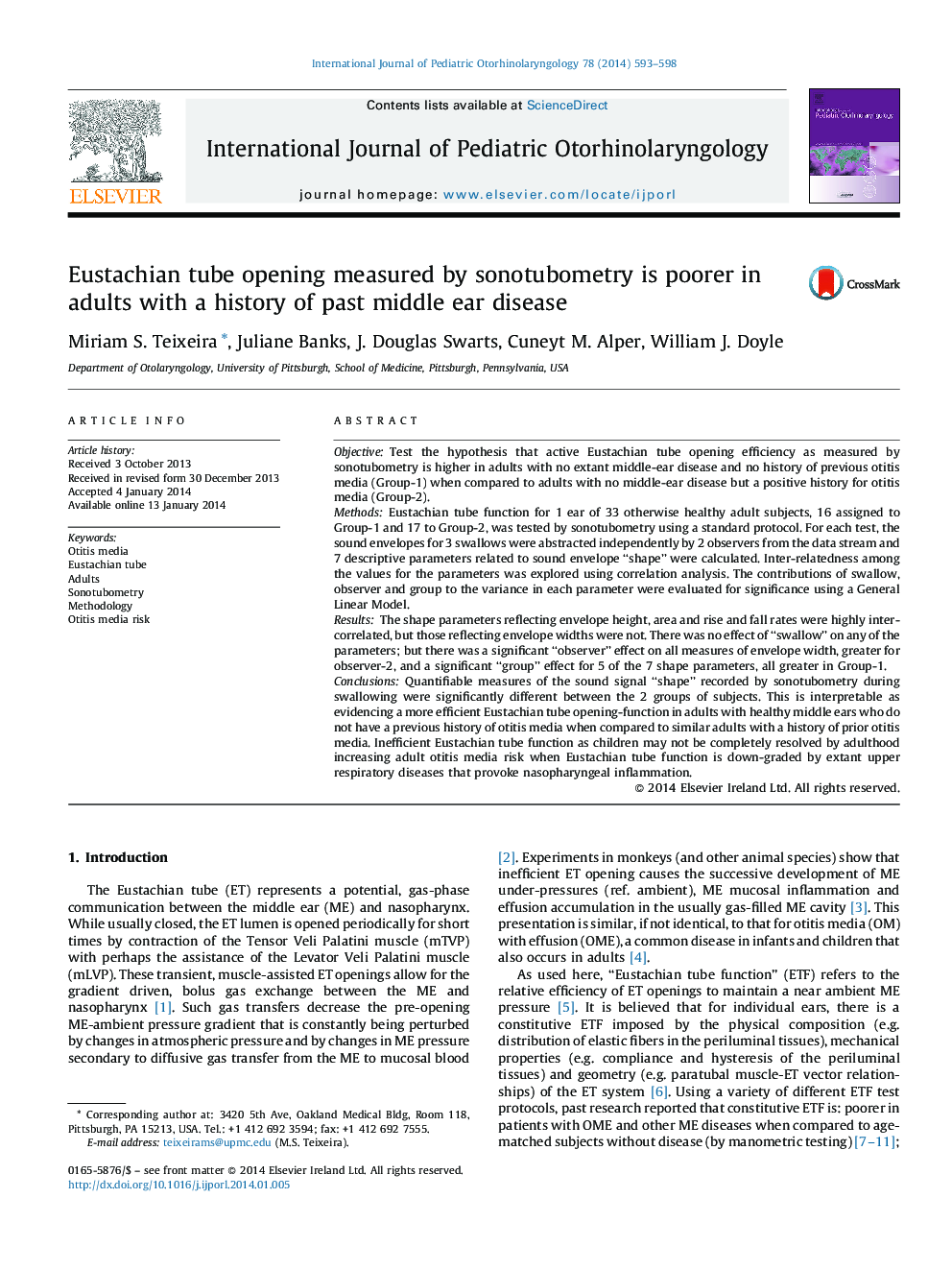| Article ID | Journal | Published Year | Pages | File Type |
|---|---|---|---|---|
| 6213587 | International Journal of Pediatric Otorhinolaryngology | 2014 | 6 Pages |
ObjectiveTest the hypothesis that active Eustachian tube opening efficiency as measured by sonotubometry is higher in adults with no extant middle-ear disease and no history of previous otitis media (Group-1) when compared to adults with no middle-ear disease but a positive history for otitis media (Group-2).MethodsEustachian tube function for 1 ear of 33 otherwise healthy adult subjects, 16 assigned to Group-1 and 17 to Group-2, was tested by sonotubometry using a standard protocol. For each test, the sound envelopes for 3 swallows were abstracted independently by 2 observers from the data stream and 7 descriptive parameters related to sound envelope “shape” were calculated. Inter-relatedness among the values for the parameters was explored using correlation analysis. The contributions of swallow, observer and group to the variance in each parameter were evaluated for significance using a General Linear Model.ResultsThe shape parameters reflecting envelope height, area and rise and fall rates were highly inter-correlated, but those reflecting envelope widths were not. There was no effect of “swallow” on any of the parameters; but there was a significant “observer” effect on all measures of envelope width, greater for observer-2, and a significant “group” effect for 5 of the 7 shape parameters, all greater in Group-1.ConclusionsQuantifiable measures of the sound signal “shape” recorded by sonotubometry during swallowing were significantly different between the 2 groups of subjects. This is interpretable as evidencing a more efficient Eustachian tube opening-function in adults with healthy middle ears who do not have a previous history of otitis media when compared to similar adults with a history of prior otitis media. Inefficient Eustachian tube function as children may not be completely resolved by adulthood increasing adult otitis media risk when Eustachian tube function is down-graded by extant upper respiratory diseases that provoke nasopharyngeal inflammation.
